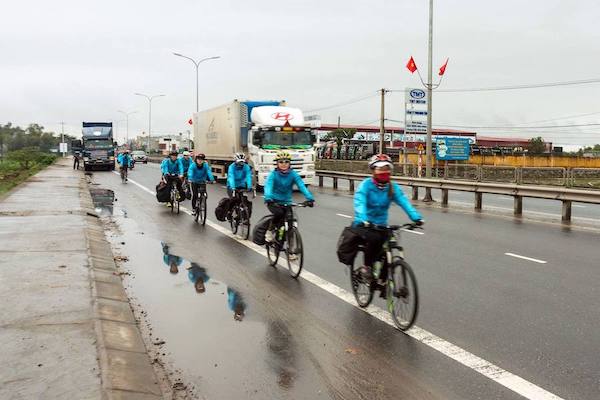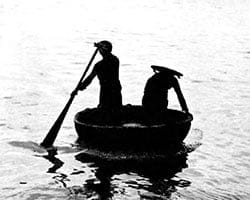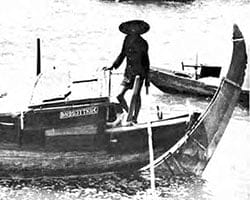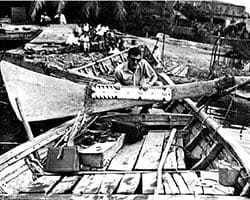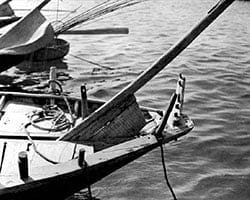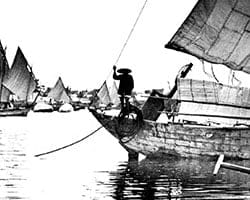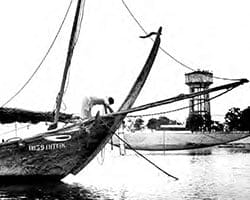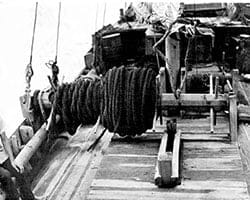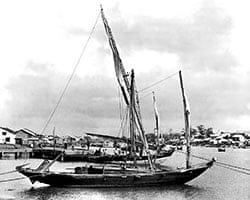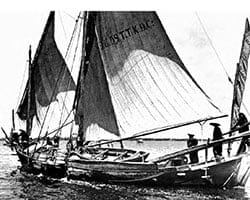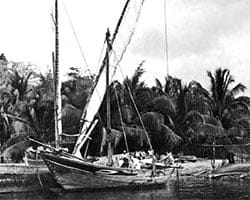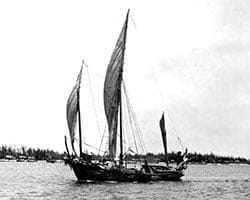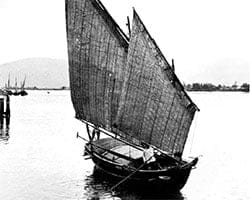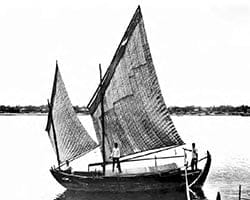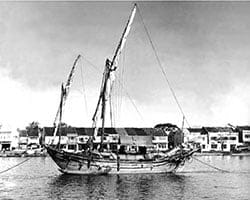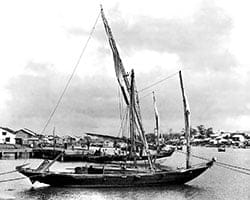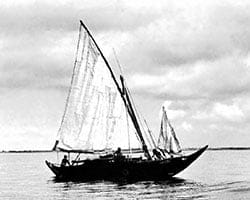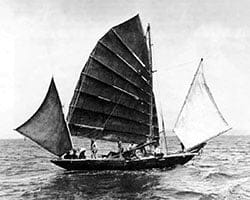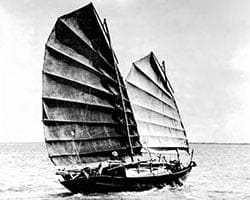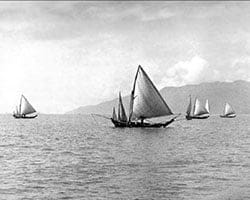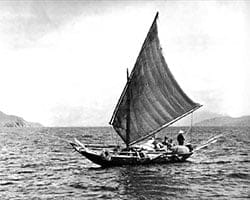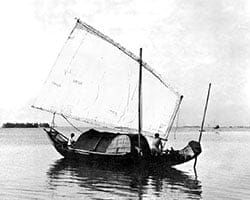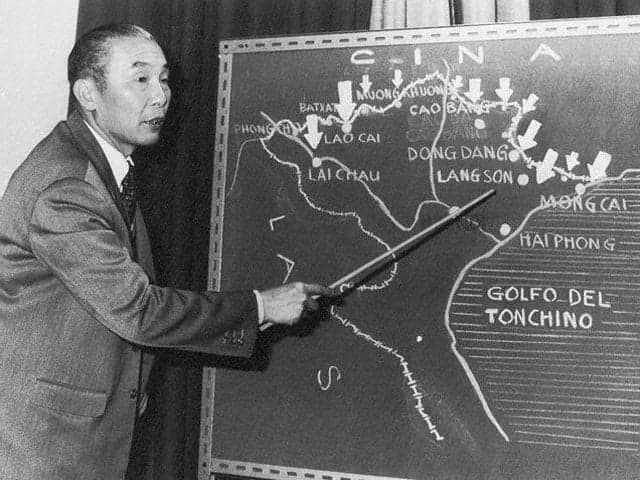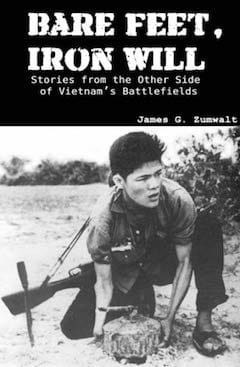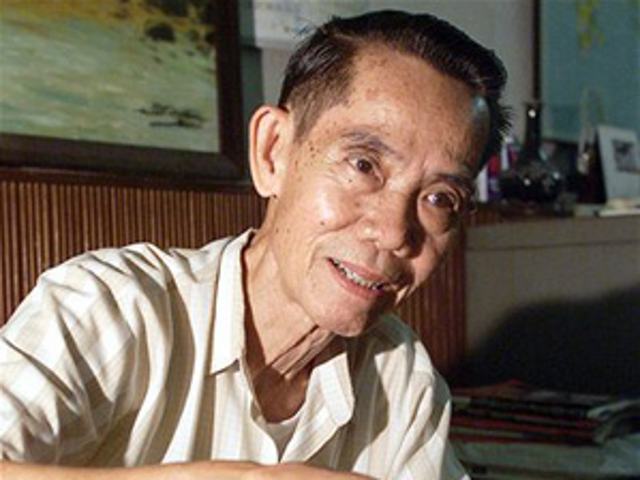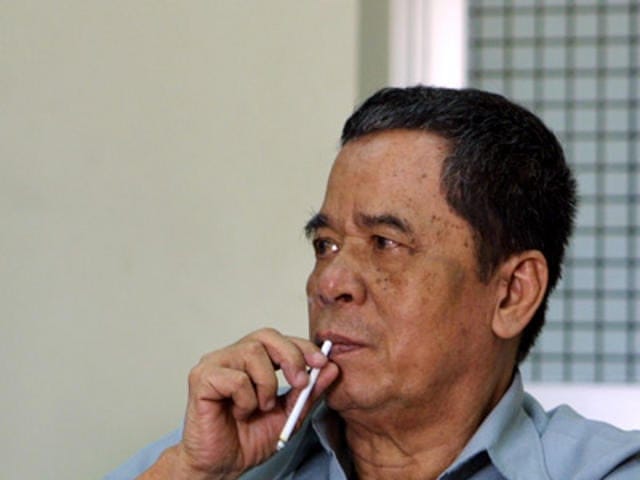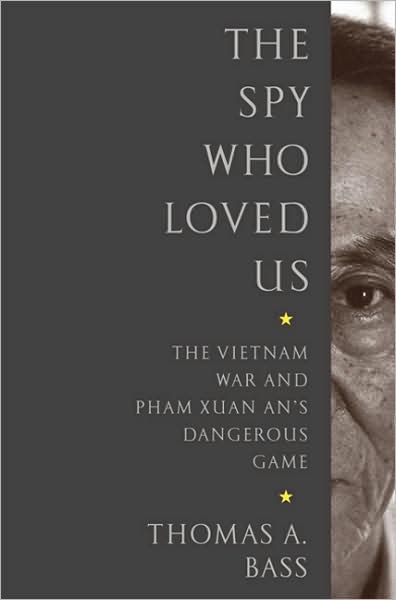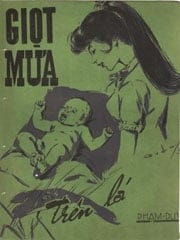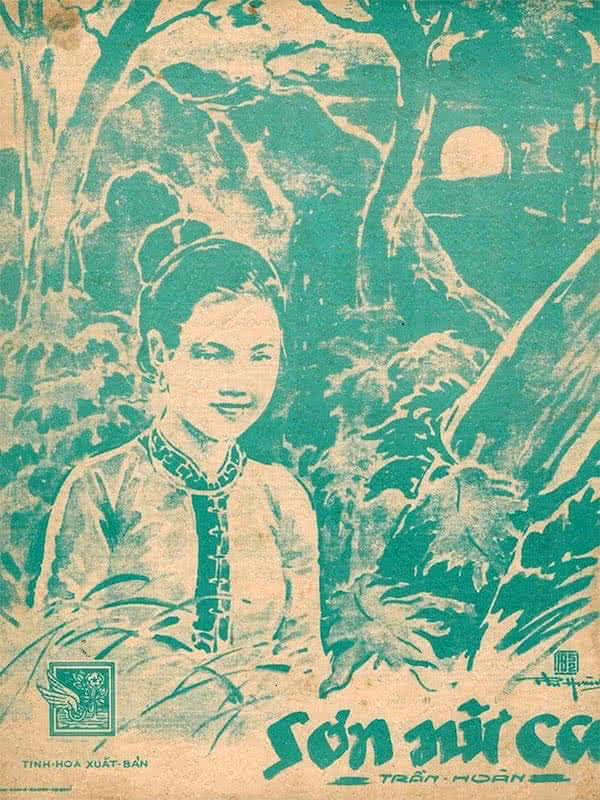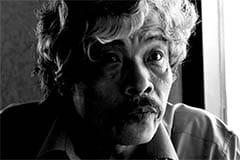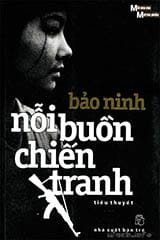Không nhiều người biết đây là phi công chiến đấu số một Việt Nam mọi thời kỳ! Nổi tiếng với lối áp sát bắn ở cự ly 200, 300 mét, khoảng cách đó trên không cũng giống như dưới mặt đất, bộ binh bắn ở khoảng cách 2, 3 mét vậy, không thể nào mà trật được! Về công danh nhiều người hơn ông, ví dụ như: Nước này còn lắm gian truân, Việc gì phải phóng Phạm Tuân lên trời
, về thành tích cũng nhiều người hơn, vì sau khi hạ 7 chiếc máy bay Mỹ thì bác Hồ lệnh ko cho ông Bảy bay nữa, sợ mất một người anh hùng. Nhưng về bản lĩnh chiến đấu – dogfight, thì Nguyễn Văn Bảy là số một!
Tag: Vietnam wars
nguyễn văn minh
Chuyện về thiếu tướng tình báo Phạm Xuân Ẩn (PXA) thì nhiều người đã biết và biết khá nhiều rồi. Nhưng có 1 câu chuyện khác, 1 nhân vật khác cũng ly kỳ không kém, theo một đường hướng hoàn toàn khác.
PXA là 1 điệp viên hạng nhất, điều đó không có gì phải bàn cãi. Sinh ra trong 1 gia đình công chức thuộc địa cao cấp, 1 địa chủ giàu có, được ăn học đàng hoàng. Tham gia CM năm 45, kết nạp Đảng năm 53 bởi chính Lê Đức Thọ, ông trùm nội chính VN, được hướng dẫn bởi bác sĩ Phạm Ngọc Thạch, 1 nhân sĩ được ông Hồ hết sức yêu mến và tin tưởng, được hỗ trợ và chỉ đạo từ Mười Hương, Tư Cang… những nhân vật tình báo chuyên nghiệp (chuyên nghiệp hiểu trong ngữ cảnh VN, chứ chưa thể so với CIA hay KGB được). PXA là 1 điệp viên hạng nhất trên mọi phương diện, định hướng hoạt động tình báo chiến lược từ sớm, được tổ chức gởi đi Mỹ học, làm việc cho những thông tấn xã hàng đầu thế giới như Time và Reuter, có quan hệ với tất cả những nhân vật tinh hoa, chóp bu của giới quân sự và chính quyền miền Nam, các nhân vật tình báo hàng đầu của tất cả các bên như William Colby, Edward Lansdale, Lucien Conein, Bs. Trần Kim Tuyến…
Còn Nguyễn Văn Minh (Ba Minh – NVM) sinh ra trong một gia đình nghèo khó đông con, chỉ mới học hết lớp 5, gia cảnh khó khăn và sức khoẻ kém, đã từng muốn vào chiến khu tham gia CM nhưng không thực hiện được (cũng vì lý do sức khoẻ). Cho đến năm 54, cái gọi là “hoạt động CM” của ông chỉ dừng lại ở mức “cảm tình viên” ở cấp quận, huyện, chủ yếu là cung cấp những tin tức thuộc loại làng nhàng. Hoạt động tố Cộng, diệt Cộng của Ngô Đình Diệm những năm 55, 56 làm nhiều tổ chức, đường dây bị vỡ, NVM mất liên lạc suốt gần 10 năm. Một số lần đường dây được nối lại, nhưng rồi lại đứt. Những hoạt động của ông giai đoạn đầu chưa thể xem là tình báo, chỉ mới ở mức độ thông tin cấp thấp. Năm 55, ông học đánh máy chữ, chủ động bán nhà lấy tiền hối lộ để được vào làm nhân viên đánh máy ở Bộ tổng tham mưu chế độ cũ, hàm “thượng sĩ nhất”. Đây là bước đi đầu tiên chứng tỏ ông có một kế hoạch, một bài bản để làm tình báo chuyên nghiệp.
Trong suốt 18 năm, từ 1955 đến 1973, NVM tìm cách nối lại đường dây liên lạc với tổ chức, nhiều lần không thành công. Một số lần thành công thì cái vị trí, cấp bậc quá thấp của những người trong đường dây làm cho những tin tức của ông không được đánh giá đúng, mặc dù theo như lời NVM, ông đang “ngồi trên một núi vàng”, vì rõ ràng cái vị trí dù chỉ là nhân viên đánh máy trong Bộ tổng Tham mưu cho phép NVM tiếp cận với những thông tin thuộc loại tối mật. Không mất kiên nhẫn, trong suốt 18 năm đằng đẵng, NVM tìm cách liên hệ và chờ đợi cái ngày mà người ta đánh giá đúng những thông tin mà ông có thể cung cấp! Không biết chắc là vì những lý do gì, nhưng mãi cho đến cuối năm 1973, mạng lưới điệp báo A.3 mới chính thức được thành lập, và 1 dòng chảy thông tin trực tiếp từ Bộ tổng Tham mưu được hình thành. Người ta bắt đầu đánh giá đúng về giá trị của tình báo viên NVM, dù chỉ trong khoảng 1 năm rưỡi cuối cùng của cuộc chiến.
Nhà nghèo với 10 đứa con, lương của một “thượng sĩ nhất” không đủ nuôi chừng đó miệng ăn. Nhưng ngày nào ông cũng làm việc 15, 16 tiếng chép tay lại toàn bộ thông tin để đưa ra ngoài. NVM học thêm tiếng Anh chừng 1 năm để có thể copy được tài liệu tiếng Anh, và như ông có nói: tôi ít học, không đủ trình độ để phân tích, đánh giá thông tin, tôi chỉ làm 1 việc nhỏ nhoi, nhưng làm rất tốt! Có lần, tổ chức đưa 200 000 để ông mua chiếc xe máy để tiện cho việc đi lại, liên lạc. NVM mua chiếc xe Honda 67 hết hơn 100 000, trả phần còn lại! Sau này được hỏi về hành động đó, sao không giữ lại tiền mà nuôi 10 đứa con, ông trả lời: “tôi không bán tin, tôi cũng làm CM như các anh thôi!” Cách trả lời cho thấy ông ấy hoàn toàn ý thức về vai trò cũng như giá trị của một điệp viên hạng nhất! Chất lượng của những thông tin ông ấy cung cấp không phải bàn cãi, khi sau 75, người ta thăng anh “thượng sĩ” lên đại tá, và trao tặng danh hiệu Anh hùng lực lượng vũ trang.
Tóm tắt về nhân vật, để thấy rằng NVM không có những gì PXA có: không sinh ra trong 1 gia đình truyền thống giàu có, không được học hành đầy đủ, thậm chí không có được sức khoẻ tốt! Không được “giác ngộ cách mạng” với những nhân vật lão thành hàng đầu như Lê Đức Thọ, Phạm Ngọc Thạch, không được hỗ trợ bởi 1 đội ngũ điệp báo hạng nhất như Mười Hương, Tư Cang, không được định hướng và đào tạo về hoạt động tình báo bài bản từ sớm như PXA. NVM khởi đầu chỉ là một “cảm tình viên” cấp quận, huyện, và hầu như không có một tiếp xúc, định hướng, huấn luyện nào về nghiệp vụ tình báo! Đôi lúc có cảm tưởng rằng, mọi đường đi nước bước là tự ông ấy tính toán lấy, từ việc vào làm ở Bộ Tổng tham mưu, cho đến việc móc nối, chờ đợi 18 năm để người ta có thể hiểu đúng giá trị của mình! Và thậm chí có cảm giác rằng, trong nhiều năm, người ta không tin tưởng NVM, có thể vì ông ấy không nằm trong diện được đào tạo, được “quy hoạch”.
Sự thực là suốt 20 năm hoạt động tình báo, NVM chưa bao giờ là Đảng viên, ông chỉ gia nhập đảng CS sau 1975, 1 bước “thủ tục” cần thiết để có thể thăng ông ấy lên đại tá và trao tặng danh hiệu Anh hùng. Nhiều sự việc nằm ngoài hiểu biết của tôi, hay có điều gì “một nửa sự thật” mà ngành tình báo đến giờ vẫn không thể nói ra!? Trong suy nghĩ của tôi, điều đó gần như là không thể, khi con 1 nhà lao động nghèo ít học, không có được bất kỳ tiếp xúc gì với các thành phần “lý tưởng”, “tinh hoa CM”, gần như không được hướng dẫn, hỗ trợ bởi một tổ chức! Gần như là đơn phương, đơn tuyến, tự mình vạch ra đường đi nước bước, tự mình liên hệ và chờ đợi để người ta hiểu đúng về giá trị của những thông tin mà mình cung cấp! Lòng yêu nước “thuần thành” hay còn điều gì khác!? PXA đã là 1 câu chuyện ly kỳ, NVM là 1 điều kỳ diệu! Dân tộc VN tồn tại được qua nhiều biến động của lịch sử vì có những điều kỳ diệu chưa thể được lý giải đầy đủ như thế!
ngày này năm xưa
Kháng chiến 9 năm bùng nổ, Hồ Chủ tịch chỉ định Luật sư Phan Anh làm bộ trưởng quốc phòng. Ông Phan Anh lấy lý do tuổi trẻ, không có kinh nghiệm quân sự thoái thác. HCT bảo: việc đánh đấm cứ để cho Giáp nó lo (sic – nguyên văn). Cái con mắt dùng người ấy có cái gì đó rất bài bản, rất Tây, nó khác xa những mô hình quân sự cứng nhắc của khối XHCN sau này.
Đánh đấm là việc của Tổng tham mưu trưởng (Chief of the General Staff), là một quân nhân, còn Bộ trưởng QP là một chính khách, lo những công việc như: di dân làng nghề đúc đồng Ngũ Xá ven Hà Nội lên chiến khu, đúc đạn cho quân đội lâu dài, vận chuyển 2 vạn tấn muối từ Nam Định lên rừng, số muối này dự tính đủ ăn trong 10 năm, và vô số những công việc tương tự.
Trong con mắt HCT, vào cái thời gian mà chiến sự hãy còn chưa ác liệt và kéo dài nhiều thập kỷ như sau này, thì ông Giáp có thể là một vị tướng cấp cao nhất, đủ tài năng để chỉ huy binh sĩ đánh đấm trên chiến trường, nhưng chưa phải là một người có tầm suy nghĩ rộng, đủ bao quát để có thể hoạch định sách lược, kế hoạch quốc phòng với tầm nhìn dài hạn.
Trong cái giai đoạn mà ông Giáp hãy còn rất trẻ ấy, nhiều điều sâu xa ông chưa thể hiểu hết về HCT, quyết tâm đánh đấm có thừa, nhưng kinh nghiệm ông chưa có. Nhất là giai đoạn ngay sau tháng 8, 1945, tướng Giáp thường xuyên tỏ ra khó hiểu hay phản đối, không hài lòng trước những chính sách mềm mỏng đến mức đáng ngạc nhiên của ông Hồ.
Giai đoạn 45 ~ 47 ngay sau đó là những chuỗi đại bại, những đơn vị cấp sư đoàn của tướng Giáp liên tục thua trận và chịu tổn thất, cơ bản là vì tướng Giáp muốn ngay lập tức đánh lớn, đánh tay đôi với một quân đội chuyên nghiệp, hiện đại như của thực dân Pháp. Các sử gia nước ngoài đánh giá ông Giáp “nướng quân” chủ yếu là vì giai đoạn đầu này.
Sau đó phải chuyển sang mô hình “đại đội độc lập – tiểu đoàn tập trung”, phân tán nhỏ lực lượng đánh du kích. Lúc đó mới thấy những tính toán ban đầu về đường lối, đạn dược, lương thực, muối ăn… của ông Hồ có cái chiều sâu của nó. HCT mặc dù tin tưởng vào quyết tâm của ông Giáp, nhưng không tin hoàn toàn vào những tính toán của ông ấy.
Nên một lúc nào đó, HCT buộc lòng phải đưa một ông đại tướng thứ hai là ông Nguyễn Chí Thanh lên như một phương án bổ sung, dự phòng, phòng khi biết đâu ông Giáp tính toán sai lầm. Ông Thanh thì đánh đấm rất ít, nhưng viết lách, nói năng, lý luận rất hay, có sức thuyết phục quần chúng, suy nghĩ có tầm bao quát, hay ít ra cũng có vẻ là như thế!
Có giai đoạn, hầu như tuần nào tướng Thanh cũng được ăn tối chung với ông Hồ một bữa, một vinh dự mà ngay cả ông Giáp cũng không thường xuyên có được. Chính trị VN nó thế, người ta sẽ đếm số lần ăn tối này để dự đoán ai lên ai xuống. Rất may là ông Giáp đã nhanh chóng học được từ kinh nghiệm thực tế, để mà 9 năm sau đó, chúng ta có được trận Điện Biên Phủ.
Nhiều điều sau này tướng Giáp thừa nhận thẳng thắn trong hồi ký của mình: “chúng tôi là một đội ngũ trẻ, làm những công việc vượt quá sức của mình, nên gặp sai sót là điều không thể tránh khỏi…” Ai đó công tâm sẽ nhận thấy vai trò của một người thầy, người mà kinh nghiệm, sự từng trãi trong cuộc sống vượt xa tầm nhận thức của rất nhiều người..
địa đạo kỳ anh
bắc hành – 2016, phần 45
Chặng 45: Vịnh Mốc ❯ tt. Cửa Tùng ❯ tt. Cửa Việt ❯ tx. Quảng Trị ❯ Hải Lăng ❯ An Lỗ ❯ Sịa ❯ Bao Vinh ❯ tp. Huế
Bắc hành 2016 p1
Mai Châu, Mộc Châu 2016
Điện Biên 2016
Lai Châu 2016
Hà Giang 2016
Cao Bằng 2016
Lạng Sơn 2016
Bắc Ninh 2016
Ninh Bình 2016
Bắc hành 2016 p2
Ghé thăm địa đạo Vịnh Mộc, Vĩnh Linh. Điều đặc biệt là huyện Vĩnh Linh có nhiều xã là đất đỏ bazan (một số xã là đất cát), người dân trồng nhiều hồ tiêu, cao su… Cũng chính nhờ cái đất ấy nên địa đạo mới có thể hình thành được, đơn giản là với phương tiện thô sơ ngày trước, không thể đào hầm trong đất cát. Quy mô nhỏ hơn địa đạo Củ Chi nhiều…
Nhưng Vịnh Mốc có một vai trò khác biệt, là điểm gần với đảo Cồn Cỏ nhất, con đường tiếp tế cho đảo đi qua đây, thế nên Vịnh Mốc chịu sự đánh phá ác liệt. Toàn bộ cuộc sống ở đây ngày xưa được tổ chức dưới lòng đất, nhìn tổng thể như một pháo đài 3 tầng, ngầm trong một sườn đồi, hướng ra biển cả. Bức ảnh cô du kích Vịnh Mốc ai đó chụp đến là đẹp!
Hành trình tiếp tục đi ven biển, cửa Tùng (sông Bến Hải), cửa Việt (sông Thạch Hãn)… Biển Cửa Tùng, Cửa Việt rất đẹp, bắt đầu từ nơi đây trở vô Nam, con đường di dân của người Việt ngày xưa từ phía Bắc, bắt đầu chủ yếu bằng đường biển với ghe thuyền, chứ không phải trên bộ như các vùng Nghệ An, Hà Tĩnh nữa. Đất miền Trung dài và hẹp vì như thế!
Người ta chỉ đi bằng ghe thuyền đến các vùng đất có thể cư trú được dọc theo bờ biển, rồi cứ thế tiếp tục xuôi về Nam, chứ không mở rộng ra về phía núi (phía Lào). Một lúc nào đó, cùng với chiếc kayak của mình, tôi sẽ rong chơi cho bằng hết tất cả những vụng biển, đầm phá, bãi bờ, sông nước này! Đến để thấy một nụ cười hồn nhiên thật quá là xinh!
bắc hành – 2016, phần 15
Chặng 15: Điện Biên
Bắc hành 2016 p1
Mai Châu, Mộc Châu 2016
Điện Biên 2016
Lai Châu 2016
Hà Giang 2016
Cao Bằng 2016
Lạng Sơn 2016
Bắc Ninh 2016
Ninh Bình 2016
Bắc hành 2016 p2
Hiện tượng rét bất thường trên toàn miền Bắc, khi tuyết rơi ở Ba Vì, ngay gần Hà Nội chứ không phải chỉ ở Sapa, Mẫu Sơn, Y Tý, Bát Xát… như các năm trước, nhiều nơi đã xuống độ âm. Thời tiết ở Điện Biên ngày này thấp nhất 3℃ vào giữa trưa, lạnh hơn cả năm ngoái cũng tầm này lúc tôi ở Sapa, trời mù, mưa lâm thâm, nhưng thật ra vẫn không quá khó chịu.
Thời tiết thật lý tưởng để đi bộ tham quan khắp cánh đồng Mường Thanh, cho cơ thể được vận động chút, thay vì đi xe máy: sông Nậm Rốm, cầu Mường Thanh, hầm chỉ huy của tướng Christian de Castries, đồi A1 (Eliane 2)… Đã đọc khá nhiều đầu sách về Điện Biên Phủ, nhưng phải đến tận nơi đây, chui vào các lô cốt và các đường hầm, thì mới hiểu được tại sao…
Trung đoàn trưởng Nguyễn Hữu An (sau này là thượng tướng) phải mất hơn 50% quân số của trung đoàn 174, đại đoàn 316 (chỉ mới tính số hy sinh, chưa tính số bị thương) và 36 ngày đêm ròng rã mới chiếm lĩnh được ngọn đồi này! A1 đổi chủ không biết bao nhiêu lần trong suốt 36 ngày đêm đó, mỗi bên chiếm một nửa, giằng co qua lại trong phần lớn thời gian!
Gần đỉnh đồi, cái hố cực lớn tạo ra bởi một tấn thuốc nổ, chỉ bằng cách đào đường hầm sâu vào trong thân ngọn đồi, đặt thuốc nổ để thổi bay nó đi thì đồi A1 mới thực sự bị đánh bại. Sáng ngày 7 tháng 5 năm 1954, với chiến thắng bước ngoặt ở đồi A1 này, số phận của trận chiến Điện Biên đã được định đoạt. Lịch sử đã được viết bằng máu như thế đó!
bắc hành – 2016, phần 14
Chặng 14: Điện Biên
Bắc hành 2016 p1
Mai Châu, Mộc Châu 2016
Điện Biên 2016
Lai Châu 2016
Hà Giang 2016
Cao Bằng 2016
Lạng Sơn 2016
Bắc Ninh 2016
Ninh Bình 2016
Bắc hành 2016 p2
Thăm bảo tàng Điện Biên, một công trình có phần hơi đơn giản, sơ sài, thiếu chi tiết, so với một sự kiện tầm cỡ như trận Điện Biên Phủ. Tượng đài chiến thắng nằm ở ngay trung tâm thành phố, bên trên một quả đồi cao (đồi D1, Dominique 2), cái công trình kiến trúc – điêu khắc ấy… không gây được trong tôi bất kỳ một cảm xúc thẩm mỹ nào, dù là nhỏ nhất!
Điều hứng thú duy nhất là đứng trên đỉnh đồi này, có thể nhìn ra bao quát toàn bộ cánh đồng Mường Thanh (không quá rộng lớn) và nhìn xuống trung tâm thành phố, những ngọn đồi bao quanh với mây mù vần vũ, một cảnh tượng rất ngoạn mục! Có cảm giác mọi quy hoạch đô thị ở cái thành phố này đều xoay quanh chủ đề… trận chiến Điện Biên Phủ.
Các loa phóng thanh khắp các phố phường vẫn hàng ngày loan tin, tạo ra một cái không khí như là… của thời bao cấp, hơn 30, 40 năm về trước! Đến cả cô hướng dẫn viên bảo tàng vẫn khóc mỗi khi thuyết minh cho du khách nghe về trận Điện Biên và Đại tướng. Không có ý bất kính, nhưng tôi đoán rằng mỗi ngày, cô ấy khóc khoảng chục lần như thế!
Tin về nửa đêm, hoả tốc, hoả tốc! Ngựa bay lên dốc, đuốc chạy sáng rừng… Năm mươi sáu ngày đêm khoét núi, ngủ hầm, mưa dầm, cơm vắt. Máu trộn bùn non, gan không núng, chí không mòn…
. Không cần phải nhờ đến tượng đài hay bảo tàng, lịch sử ngày xa xưa ấy tự nó đã là một điều vĩ đại! Dừng chân Điện Biên ít ngày trước khi bước tiếp hành trình!
the junk blue book, 3
the Junk Blue Book – Marion C. Dalby, by its mission definition, is to provide knowledge to help identifying various Vietnamese indigenous boats, a military technical manual to be precise, not a book about boat design and construction. However it’s among the very rare well – written and fully – illustrated documents available today for us to know how, just half a century ago, our ancestors were operating sailing crafts. As in most of the world the working Vietnamese seamen had little interest in chronicling their environment, or perhaps they had no idea that such everyday life would be of interest to anyone…
VN people is, as always, extremely easy to forget the past, and we’re today placed at a fait accompli
of a now vanished culture!
Around mid 20th century, the Age of Sail has been long over in the Western world, while in Indochina, sailing crafts were widely used still, and Westerners came to VN seeing them from a “recreational sport” point of view. Many of whom were surprised by the diversity in boat designs and constructions, some were astonished by unique features that only VN boats have, some admired the beauty and performance characteristics of certain VN sailing crafts. One such person is J.B. Piétri and his book Voiliers d’Indochine (Sailboats of Indochina). A marvellous book, no photographs, but all beautiful hand – drawn sketches, not only do they clearly show technical details, but also illustrate the other artistic side of the subject. To be presented in my up – coming posts!
the junk blue book, 2
M ore pictures from The Junk Blue Book – Marion C. Dalby, more about cargo boats (the previous post presents mainly fishing boats). First image in the series: a typical ghe bầu, the main “work – horse” of Southern people in the old days, ancestor of cargo boats usually seen in the Mekong delta nowadays (though the hull shape has changed significantly with introduction of combustion engine, I suppose). At the time of The Junk Blue Book, boats of this type were usually found around 100 ton in displacement, though in previous centuries, they were often constructed bigger at a few hundreds ton to be used for both trading and naval purposes. Ghe bầu composed the ‘spiral – cord’ of Vietnamese landlords’ navies in feudal time.
According to records of Western missionaries, adventurers, soldier – of – fortunes… who worked in Vietnam in the late 18th century, the Nguyễn and Tây Sơn lords’ navies both had a few 70 – guns mans – of – war, built and equipped to Western designs, but the majority is of ghe bầu type, with 20 ~ 60 guns mounted, capable of transporting upto 700 troops. Though these facts are likely, they’re still vague descriptions, there’s a lack of details and evidences. 50 – guns warship is a very strong frigate indeed, could be classified as 4th – rate ship – of – the – line, par the Royal Navy rating system, and should have the displacement at least at 1,000 (metric) tons, a question mark whether Vietnamese traditional boat building at the time was having such a capability.
the junk blue book, 1
More pictures from The Junk Blue Book – Marion C. Dalby. Some history background: in the early 60s, Northern Vietnam government (DRV) started an infiltration campaign to support the Southern communists by way of sea. The task force, designated: Group 579, deployed numerous boats, built and camouflaged as Southern fishing or cargo boats, smuggled weapons and war materials onto various spots along southern coast below the 17th parallel. The advantages of secret lines of boats are obvious: only need a small number of well – trained sailors, much larger cargo capacity, harder to trace and intercept (compared to e.g: transporting by trucks, which required lots of labours for road building and protecting, which is hard to keep secret).
The US Navy took countermeasures, first by carrying out a study on VN indigenous boats: designs and constructions, outer appearances, sail plans, navigational equipments, operational zones and routes, methods and habits of fishing… in an effort to help identifying which are real Southern VN boats, and which are camouflaged Northern ones. The result is The Junk Blue Book, the study was taken place at a time when the majority of VN boats (over ~ 70%) was still operating primarily on sails. Ironical facts of history, that a work conducted initially against Vietnamese people, has now turned into a record of knowledge on Vietnamese sailing tradition, a tradition that has been long forgotten by its owner, very few people still care or even aware of it nowadays!
17 tháng 2…
Anh ở Lào Cai, Nơi con sông Hồng chảy vào đất Việt. Tháng hai mùa này con nước, Lắng phù sa in dấu đôi bờ. Biết em năm ngóng tháng chờ, Cứ chiều chiều ra sông gánh nước. Nên ngày ngày cùng bạn bè lên chốt, Anh lại xuống sông Hồng cho thoả nỗi em mong. Đài báo gió mùa em thương ở đầu sông, Đỉnh đồi cao chiến hào anh gặp rét. Biết mùa màng đồng quê chưa cấy hết, Tay em ngập dưới bùn lúa có thẳng hàng không? Nếu chúng mình còn cái thủa dung dăng, Anh thả lá thuyền xuôi về dưới ấy. Em ra sông chắc em sẽ thấy, Chỉ nỗi nhớ chúng mình đủ ấm mọi mùa đông… Thì hỡi em yêu ở cuối sông Hồng, Nếu gặp dòng sông ngầu lên sắc đỏ, Là niềm thương anh gửi về em đó, Qua màu nước sông Hồng, em hiểu chiến công anh! (Gửi em ở cuối sông Hồng – Dương Soái)
Đêm tháng Năm vào bình độ bốn trăm, Đoàn xe trôi êm êm, tầm đại bác. Thuốc súng tanh lá rừng kêu xào xạc, Chúng no máu rồi không cắn nữa đâu!? Lắc lư xe quan tài vượt về sau, Máu dỏ xuống đường cuốn vào cát bụi. Lại xe quan tài vượt lên lầm lũi, Tốp thương binh bê bết máu mặt mày. Đám cướp kia Thánh, Phật dạy ăn chay, Chẳng kiêng gì ngày rằm mùng một. Đạn cày xới đất tơi trồng cây tốt, Tưới máu người cướp, giữ đất biên cương. Tư lệnh Hoàng Đan trận này cầm quân, Ông bảo rằng: sống chết thời vận số. Cả trung đoàn ào ào như thác lũ, Bình độ Bốn trăm bình địa trận người. Những chàng trai sống chết trận này ơi! Mưa đổ xuống ông trời tuôn nước mắt. Ơn nhớ mãi thân người đi giữ đất, Người trở về ăn, sống, ở ra sao? (Bình độ bốn trăm – Nguyễn Mạnh Hùng)
cq – 88
Bức tranh này do cậu bé TKXuyên vẽ năm 1988, màu nước trên giấy, hiện vẫn treo trong phòng làm việc của mình (mọi người đừng cười một người chưa bao giờ có khiếu vẽ vời gì dù chỉ là một chút xíu). Dĩ nhiên là tôi còn nhớ rất rõ là vẽ vì những lý do gì, trong bối cảnh như thế nào. Mọi người hẳn chưa thể nào quên sự kiện CQ – 88 mà ngay cả một cậu bé 9 tuổi là tôi lúc bấy giờ cũng từng ngày dõi theo. Nghĩ mà buồn, đến nay hơn 20 năm rồi mà mọi chuyện vẫn thế. Dòng chữ đề trong bức tranh: Cũng có lúc mưa dồn sóng vỗ, Quyết ra tay buồm lái với cuồng phong
, cụ Nguyễn Công Trứ có sống lại mà nhìn bối cảnh bây giờ…
bare feet, iron will
One more item in my to – be – read list: Bare Feet, Iron Will, by James Zumwalt, a retired Marine lieutenant colonel, son of the Vietnam war’s time US Navy’s Admiral. The book has recently been translated and published in Vietnamese. Though I haven’t got an English copy in hand, my interests rose after reading this interview with the author. Just like Archimedes Patti’s book Why Vietnam?, I would expect stories from intermediate – level officers to contains a lot of facts, events, numbers… that gives details into the things that happened, and offers closer, truer look into the figures involved, unlike those of high – level cadre supérieur (a.k.a politicians).
The author recently gave an interview with Vietnamese presses, in which he confirmed that his book was inspired by The sorrow of war, Bảo Ninh’s novel. He loves the novel and dedicates part of his book to write about this Vietnamese fiction and its author. I knew some 20 years ago that The sorrow of war would be a very profound impact (read more about it in my another post here). It’s just ridiculous that the VN government once forbade (and still limits) the novel, permits it to be appeared on news on occasions only to serve some political purposes, this time is a step toward tighter relation with the US. Below is some notable remarks from the author, James Zumwalt interviews:
Was the loss of a loved one any less significant just because it occurred on the other side of the battlefield? …It just opened my eyes to the fact that we have to recognise that our suffering is mirrored on other side.
When I made my second trip, one of the first places I went to was the Hanoi war museum. And there they had a section devoted to war criminals – one of whom was my father for his use of Agent Orange.
(Asked: How did he react to being a war criminal?) He kind of smiled and said: Well it’s a good thing they didn’t arrest me when I was there.
In one case, a doctor told his wife he would probably be gone for six months to a year. He was gone for eight years, and only got back to visit his wife once… Many of those I interviewed had difficulty pinpointing particular years, but they could tell me if it was in dry or monsoon season. That was the way they looked at it. The year didn’t matter. That shows the mindset they operated under.
There were some 1,400 mothers who lost three or more sons in the war. I think we’d be hard pressed in this country to find more than a handful of mothers who lost more than one son in Vietnam. They considered it a sacrifice they had to make.
In the interviews I did with hundreds of NVA / VC I asked them what their motivation was. It was not communism but rather it was nationalism and the desire to reunify the country… I believe it is part of the Vietnamese people’s DNA. To them, there was never any alternative, they just had to prevail.
Look at the Vietnamese who defeated the Japanese in 1945, the French in 1954, the Americans in 1975, and again the Chinese in 1979, I don’t think we realised we were probably fighting against Vietnam’s own Greatest Generation.
(yes we sacrificed our best seeds in those wars, you know what the sh… is left as of today!)
un vietnamien bien tranquille
Having a time to read some notable documents: The spy who loved us – Thomas Bass, and The perfect spy – Larry Berman. At first, I’d thought: oh, all these stories I’ve knew quite well already, there’s no need to read more. But then I considered it’s good to be reflective, reading the same stories in another language, from other points of view.
I’d read these two books (in English), which contains quite some interpreting errors (most of them are unintentional I think) then I proceeded to their Vietnamese translations (which are really bad, lots of linguistic mistakes), but again another reflections of reflections. All readings confirmed my understanding about the Vietnamese legendary intelligence agent Phạm Xuân Ẩn, whose role is now recognized as crucially decisive in the second IndoChina war.
Espionage and Journalism
As the first IndoChina war was approaching its end, the Việt Minh leaders knew that it’s just a matter of time before the American get their hands in. They had lived and fought with the French long enough that they had extensively well understanding on their enemy, the same is not true for the Americans. During the 9 years of the first IndoChina war, Ẩn had already worked against the French, under his cousin Phạm Xuân Giai, head of South Vietnam’s Cinquième Bureau – department for psychological warfare, who was working for the French’s Deuxième Bureau.
In 1957, Phạm Xuân Ẩn was ordered to go to the States, studying journalism (as a cover), learning their language, culture, their way of thinking… a preparation that later turned out to have devastating effects. During the time in America (and even long before), Ẩn has developed a sympathy (if not admiration) for American people and culture, and at the same time, touting his horns in a war to come against them.
These two professions were very contradictory, but also very similar. The intelligence job involves collecting information, analyzing it, and jealously keeping it secret, like a cat covering its droppings. The journalist, on the other hand, collects information, analyzes it, and then publishes it to the world. (Phạm Xuân Ẩn)
Information and disinformation
Upon coming back (1959), Ẩn worked for several presses: Việt Tấn Xã, Reuters, Time… Among all journalists in Saigon at the time, Ẩn is considered to be the best informants: new – comers introduced with him for guidances, seasoned ones seeked him for tips. He had various sources in the governments, army officers, secret polices… he had the best ears on the ground for everything. He is dubbed: “the weatherman” who foretell the political atmosphere, generals consulted him before planning coup d’état, the Buddhist monks informed him in advance if they prepare a protestant self – burning.
He made very good friend and closed cooperation with Edward Lansdale, head of IndoChina CIA division, the legendary agent nick – named: the king – maker, who manipulated every puppets on the Southern political stage, yet Lansdale had never doubted it. People was thinking he could be a CIA agent, a French sûreté, a South VN secret police, or he could be both. But none ever thought of him working for the Red NLF.
After the war, upon learning about the fact, some of his colleagues have tried to prove that Ẩn could had been giving disinformation at times. In fact, all his written records at the Time magazine (where he worked for 10 years) proved the opposite. Had he done it, with all the overwhelming clandestine agents among the presses, things could have easily been cross – checked and that would betray Ẩn, the espionage. And he of course hadn’t made those preliminary mistakes.
The source had given me the story on condition that I shouldn’t reveal it before it happened. These are the ethics of the press. You have to observe them, no matter how tough it may be. These are also the ethics of an intelligence agent who knows the propaganda value of burning monks. (Phạm Xuân Ẩn)
Balance and Objective
One thing Ẩn learned in American news career is that: a writing must be well – balanced, not biased in any directions, and at the same time it has to be objective, giving useful information to help coming to some helpful conclusions. Yet the two are usually contradictory. Similarly, questions have been raised about the nature of a man who lived an extremely dangerous double life for 30 years, about the one who deeply admires American culture but fiercefully fights against them.
In fact, Ẩn made true friend to many American journalists, help them in many cases, many of whom still love him even after learning that he was a spy. Many would recall how he saved the life of Robert Sam Anson, the war correspondent who was arrested by the VC in Cambodia. Ẩn came closest to getting discovered when he promised to Anson’s wife (who was begging for help) that he would do everything he could, a dangerous remark which implies he really could do something. Anson was later released as per request Ẩn made to his superiors, a truth Anson would only know for sure years later.
He was a man of wisdom, courage, and clear – headed patriotism. He was also – even if it seems ironic to say this under the circumstances – a man of extraordinary integrity. He loved us at our best even while confronting us at our worst. (Daniel Ellsberg)
Strategy and Tactic
A pattern in Ẩn’s stories, as usual, as an amusing raconteur: I’m a strategic analyst, I was concentrating on background information and situation assessment
. Yet it’s a reason he gives in order not to get into too much details that he wouldn’t want to release even in the next 50 years: that’s related to too many people, many have died, but some still alive with their relatives, there’s no reason to cause harm to them anyway
(Ẩn has always been loyal and protective to his information sources, from either sides, many of which is built upon personal relations).
But Western researchers found this an “undeniable fact”: he’s been awarded with 16 medals, among which 2 are general (one “Hero of the People’s Army” medal, the highest military award in VN, and another medal for “50 years of Party’s service”), the other 14 are all credited to specific battles, 4 of which is apparently known: the Ấp Bắc battle (1963), the Tết offensive (1968), the Lam Sơn 1972 operation, and the final 1975 campaign. That gives some obvious hints on his role as a tactical adviser who devised detailed tactics to be used in various battles.
He would have had enough knowledge of the battlefield tactics, rules of engagement, logistics and battle – readiness of both the Vietnamese and Americans in that area at that time to give pretty good advice on the way to set up a trap for them. Certainly Ấp Bắc had the hallmarks of a trap. (Nick Turner)
Nguyễn Văn Tào (nom de guerre: Tư Cang), head of the H.63 spy ring, direct ‘boss’ of Phạm Xuân Ẩn, famous for his ability of pistol shooting with both hands, and never miss a shot.
Phạm Xuân Ẩn (nom de guerre: Hai Trung), the strategic analyzer whose information, documents, assessments… greatly changed the pace of war.
Nguyễn Văn Thương (nom de guerre: Hai Thương), one of the couriers who run Ẩn’s messages. He was arrested, tortured, both his 2 legs were cut off six times, each without any narcotic. He could had saved his life, but he chose to save the network.
How could someone so voluble and open about his life be a spy? How could someone so funny and pointed in his remarks about human stupidity be a Communist? …He was a divided man of utter integrity, someone who lived a lie and always told the truth. (Thomas Bass)
Communists and Nationalists
This is the point of hatred conflicting among Vietnamese communities for so many years. My point of view, which is also reflected tho – throughly throughout the books (can be seen as 2 American views) is that: the communists, they had an ideologue (no matter right or wrong it could be), and they had determinations. On that basics, they’d had detailed planning and extensive efforts to carry it out, and they’d made sacrifices to carry it out to the end. The same is not true with the so called southerners’ nationalism.
As long as the Americans were pumping money in, the Southern government staffs were trying to steal as much as possible, and pretend to be supportive to the Americans’ causes while avoiding fights and casualties on the battle fields. They’d lost, as they presented nothing, not nationalists, not even anti – communists, but only their own personal and family’s interests. The consequence can be seen clearly: the majority of southern people took side, they have always been sympathetic to the Communists’ national independence causes, although they’re not communists.
Communism and Patriotism
It would eventually become clear why so many people have made extreme efforts and sacrifices, it was not because of any ideology. Of the total 43 members of the H.63 espionage network, 25 were captured, tortured, many of them chose to die, but the network remained unbroken. They were couriers, who in 15 continuous years, ran the total 498 messages (reports) from Phạm Xuân Ẩn to the Iron Triangle Củ Chi, from where it would be delivered directly to the Politburo in Hà Nội. Ẩn always kept an poison pill in his pocket, ready for a death that was hanging over him for those 15 years.
Many who survived the war found themselves disillusioned with the post – war living, finding that the new regime has become even more corrupted than the previous one, and that is not what they were fighting for. Yet they were fighting not for any individual, any ideology, any government… Many failed to realize it is patriotism in the truest and deepest meaning! Phạm Xuân Ẩn to the last year of his life, works as an consultant to TC2 (the Vietnamese equivalence of Deuxième Bureau), who doesn’t understand and doesn’t trust him, but badly need his razor – sharp analyses and assessments.
Lessons learnt
If something can be learnt from Phạm Xuân Ẩn’s life, it’s something about cultural understanding. While most VC has very limited knowledge about American culture and values, they’d succeeded in cultivating at least one spy who could think like an American, a spy who loved Americans and was loved by them in return. That way he can get deep into the adversary’s mind and soul, and know the way to defeat them.
It’s all about understanding, the French had stayed in Vietnam for a considerable amount of time, they’d learnt to divide and conquer the Vietnamese, a job they’d done excellently. It took a few generations to absorb their culture, to gain enough understanding to have successful retaliations. What the American had done in Vietnam to some extent was repeating things the French had done already, in a far larger scale.
Those above are indeed the small part of the lessons. Ẩn said: the American are very good at collecting and analyzing information, but they don’t know what to do with them
(at least in scopes of the Vietnam war). Similarly, we can say: the Vietnamese know how to obtain a victory (or it supposes to be called so), but then they don’t know what to do with it. Phạm Xuân Ẩn in person is a talkative one, he can talk about his thinking all day.
But as a spy, a strategic analyzer, he is actually a very quite Vietnamese, who had much more profound thoughts and understanding but can’t say it out. Lots of our own problems are briefly reflected throughout the American books, but they’re not recognized tho – throughly by our own people… Things get passed silently in our sleeping – pleasing minds until another war, another revolution that is… just pending.
The spy who loved us – Thomas Bass (pdf.tar.gz) (mobi.tar.gz)
Perfect spy – Larry Berman (pdf.tar.gz) (mobi.tar.gz)
diệc lạc hồ
双鸟齐飞
黄莺飞到北京都
会遇金鹏亦乐乎
大事未成行小事
双鸟齐飞至善图
Song điểu tề phi
Hoàng Oanh phi đáo Bắc Kinh đô, Hội ngộ Kim Bằng diệc lạc hồ! Đại sự vị thành, hành tiểu sự, Song điểu tề phi chí thiện đồ!
Nhân kỷ niệm 60 năm quốc khánh nước CHND Trung Hoa (1/10/1949 ~ 1/10/2009), trích đăng lại ở đây bài thơ của một nhân viên ngoại giao đoàn Việt Nam (đăng trên Tạp chí Sông Hương, 2002): Bài thơ thể hiện tình hữu nghị cao quý của nhân dân hai nước Việt – Trung
. Bài thơ được làm năm 1991, sau một thời gian dài 10 năm (kể từ 1981), khi hai nước tuy không còn những đối đầu quân sự lớn, nhưng hai bên vẫn tiến hành một đường lối tạm gọi là artillery diplomatic – ngoại giao pháo binh – chân lý, lẽ phải đứng trên đầu nòng đại bác.
Các địa danh đẫm máu như Vị Xuyên, Ngọc Đường, Lũng Cú… những người từng bám trụ 10 năm ở đó đến nay vẫn nhiều người còn sống, vẫn còn kể lại chuyện ngày xưa ở đâu đó quanh đây. Trở lại với bài thơ, năm 1991, một đoàn ngoại giao VN sang TQ, những bước đi đầu tiên của tiến trình bình thường hóa quan hệ. Trưởng đoàn phía VN là ông Vũ Oanh, trưởng đoàn phía TQ là ông Lý Bằng.
Cả “Oanh” và “Bằng” đều là tên của hai loài chim (không giống nhau), như được thể hiện rất rõ trong bài thơ trên đây: Song điểu tề phi – Đôi chim cùng bay. Không cần phải biết chữ Hoa, đọc phiên âm Hán Việt hẳn mọi người cũng sẽ dễ dàng hiểu nội dung bài thơ! Chúng ta thấy lại cái điệp khúc Diệc lạc hồ ở đây! Diệc lạc hồ (hay Bất diệc lạc hồ) đều có thể hiểu theo nhiều kiểu: vui lắm thay, há không vui hay sao… hay theo phương ngữ miền Nam: vui quá hén!
the sorrow of war… film?

“Better to die than surrender, my brothers! Better to die!” – the battalion commander yelled insanely; waving his pistol, and in front of Kien, he blew his own brains out through his ear. (The Sorrow of War)
An un-put-down-able novel. It should win the Pulitzer prize, but it won’t. It’s too gripping for that. (The Guardian)
Dramatic… Will force American readers to acknowledge how little they still understand of the long war that left such a legacy of grief and guilt in their own country. (The Washington Post)
The Sorrow of War has won worldwide acclaim and become an international best-seller. (Amazon.com)
A good news: 8th, May, 2008, The Sorrow of War novel will be turned into movie by an American director: Nicolas Simon. After 10 years of discussion and negotiation, Bảo Ninh, the novel’s author finally permitted making of the film based on his famous book. The producer, Dominic Scriven, a very passionate admirer and friend of the author, who now holds the book copyright and want to transfer it onto the silver screen. An even better news: 9th, Aug, 2008, author of The Sorrow of War novel stated that he wouldn’t have any further connection with the The Sorrow of War movie project.
The reason given is: film’s script is not aligned with the author’s ideas. In fact, many people is doubtful that an unnamed director would be capable of working on such a great novel, although the producer (Dominic Scriven) ‘s goodwill is widely recognized! The movie project is now paused, in searching for another director! That’s a very good thing in my opinion, in the fear that we would have another history distortion (or even worse)! A picture is worth a thousand words? That’s not always true, think twice (or read the book)! In this case, words are worth thousands of pictures (or a movie)!
The novel is, more or less, an semi – autobiography. Bảo Ninh himself (or the protagonist Kiên in the novel) was a soldier in the 24th battalion, a special formation commissioned to the B3 front (central highland) in 1969. Of the unit’s 500 man, he is among the only 10 survivors. The story is an nonlinear scatter of memories, mixed the past with the moments of post-war time: childhood, a high school’s love story, the battles, and importantly lives after war.
The Sorrow of War is without doubt timeless. Perhaps it is one of the world’s greatest war novels ever written. Imagine the film Apocalypse Now and increase its effect, say by a factor of a thousand – this is the power of Bảo Ninh’s writing. I remember shivers in my spine when first reading the book, some 15 years ago! Just surf around some online bookstores, to see what readers have said about the book:
-
If this book doesn’t make you cry, you have no soul.
-
It’s definitely not a book for everyone, and I nearly put it down during the first 50-60 pages. But, I soon became wrapped up in the story and the language.
-
Books usually lay with me on my bed and after their formal end we sleep together for a few days but after the last sentence I promptly put this right back on my shelf and am having trouble thinking about it again. I had horrible nightmares during the read.
-
This book is amazing. The story progresses thematically rather than chronologically, and leaves you piecing together historical non-fictional events… He succeeds in taking the reader on a difficult journey of emotional and spiritual crisis, right to the core of the human condition and captures a sorrowful despair like no other literature I’ve ever read.
-
Like pouring acid on your moral center…
-
Just an excellent novel. To everybody who considers The Things They Carried the penultimate work of fiction about the Vietnam War: pick up The Sorrow of War and be prepared to be blown away by the stories of a Vietnamese.
-
In fact, my view of just about everything I thought I knew about North Vietnam from the mid-60’s to the mid-70’s was altered by this book.
-
This book is unbelievably emotional. The style of writing is unique: it is not linear or chronological in any way. It is chaotic, a reflection on the subject of the book. The writing style, though chaotic, seems to be a perfected style. The book was written with total disregard to order; there is no doubt that all was deliberate.
the battle of iadrang
To make war all you need is intelligence.
But to win you need talent and material.
For whom the bell tolls – E. Hemingway⓵
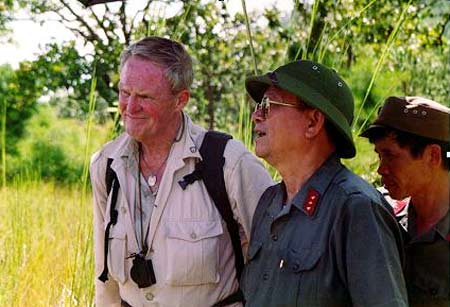
Col.Gen. Harold Moore and Col.Gen. Nguyễn Hữu An returned to the old battlefield, Oct, 1993, exchanging their diaries, maps, operational notes, memories and friendship.
The IaDrang Campaign was to the Vietnam War what the terrible Spanish Civil War of the 1930’s was to World War II – a dress rehearsal. The place where new tactics, techniques and weapons were tested, perfected and validated. In the IaDrang, both sides claimed victory and both sides drew lessons, some of them dangerously deceptive, which echoed and resonated throughout the decade of bloody fighting and bitter sacrifice that was to come.
While those who have never known war may fail to see the logic, this story also stands as tribute to the hundreds of young men of the 320th, 33rd and 66th regiments of the Peoples Army of Vietnam who died by our hand in that place. They, too, fought and died bravely. They were a worthy enemy.
Wild flowers now grow in those places of violent death. The IaDrang from PleiMe west is uninhabited except for a few montagnards who are/have been driven out to the east near PleiKu. The Ia Drang/Chu Pong area is now known as The forest of Screaming Souls ⓶ and remains mysterious and beautiful.
Hoa dại giờ mọc đầy trên mảnh đất từng đầy rẫy chết chóc. Vùng IaDrang đến giờ vẫn không có ai cư trú, ngoại trừ một vài sắc dân miền núi đang được di dân về hướng đông gần PleiKu. IaDrang, ChưPrông nay được biết đến với cái tên Truông Gọi Hồn, vẫn nguyên vẹn huyền bí và đẹp đẽ như tự ngàn xưa.
Mar, 1965, the first U.S troops arrived in Vietnam (Danang). 8 months later, their first major engagement with the VPA in a large battle (of regimental, divisional size) took place at the Valley of IaDrang, which is since then known as the Valley of Death. Feb, 1994, President Bill Clinton announced the normalization in relationship with Vietnam. In an action to bootstrap of the process, in 1993, a film was made featuring the old bloodshed battle of IaDrang. Thus, battle of IaDrang marks the begin and end of a long-time painful and bitter relationship between the two nations. Up to the present days, lots of people from both sides still can not get it right about what had really happened then and there. The story below tries to recall the truth.
But first, about the film: We were soldiers is based on We were soldiers once… and young, a book written by Harold Moore himself, as one of the direct commanders in the battle (on the American side). It’s a Randall Wallace‘s film, the famous director of Brave Heart, Pearl Harbor, and now We were soldiers, with Mel Gibson as Lt.Col. Hal Moore, and Đơn Dương as Lt.Col. Nguyễn Hữu An. To my disappointment, the film is no better than any other Hollywood’s films such as Black Hawk Down, solely made to demonstrate American heroism. Exactly as written in Harold Moore’s book: Hollywood got it wrong every damned time, whetting twisted political knives on the bones of our dead brothers
.
The film is no exception, it takes many of the small facts of the book onto it, but only to falsely portray the historical events. In fact, the film is a distortion of facts that happened, of peoples involved in the battle, especially the figure of Lt.Col. Nguyễn Hữu An. In a sense, the film has undermined the author Hal Moore’s (and many other American veterans) sincerity and goodwill. Hal Moore is also a man of literature talent, the following line is written upon his revisiting the old battlefield, 1993, accompanied by general An, about the battle and his old enemy (column on the left).
Strictly speaking, Lt.Col. Harold Moore was not the corresponding counterpart of Lt.Col. Nguyễn Hữu An, he was one of the three direct commanders in the battle, a battalion under Thomas W. Brown. Nguyễn Hữu An was then the division commander of the 325th. But history has brought the two man into one battle and a rendezvous aftermath. Battle of IaDrang was actually two main battles in an operation which lasted for one month (between American 1st division and VPA’s 320th, 33rd and 66th regiments). The main confrontations were at the X-Ray and Albany landing zones, between the 1st, 2nd, and 3rd battalions of the 7th cavalry regiment of the U.S army with the 7th, 8th, 9th battalions of the 66th regiment (and one company of the 33th regiment) of the VPA. Hence, in formations’ numbers, the two sides have equal forces.
Contrary to many many sources, Lt.Col. Nguyễn Hữu An did not have any advantages in power comparison, even in number of man. All his infantry battalions are light-armed units, with just some mortars. On the adversary side are air assault and air mobility cavalry units, with superior fire power support. From the air, an average number of 300 sorties per day was made, with all available air units in south Vietnam, and on land, field artillery came in heavy use. So the ratio here is at least 3:1 with the weaker is the Vietnamese side. Some sources give intentionally wrong information like: the landing troop of 400 man was surrounded by 4,000 soldiers, in fact, 4,000 was number in the whole area (not each individual landing zone), in the same way, we can say: two VPA regiments confronted with forces of the 1st division (a typical American division has at least 20,000 personnel).
The battle witnessed extreme uses of fire power: for the first time in history, strategic bombers B52 are used for tactical roles, air mobility by helicopters reached the highest level ever since the start of WWII. The VPA learned that they could neutralize the effectiveness of that fire power by quickly engaging American forces at close range, thus turned the battle into a close-quarter struggles with mainly knife, bayonet and other small arms. A series of well-planed ambushes turned the American situation to desperate. Finally, they know that they can not deny or hide an obvious defeat, then dropped napalm bombs to clear all vestiges, sacrificing all, including man of their own. This is known as one of the most savage battle and can be considered as microcosm of the whole war.
The American casualties is about 700, the Vietnamese is about 1100, a victory to Lt.Col. Nguyễn Hữu An in consideration to forces participated in the confrontation. The battle set up, for the first time, an example in which a modern Calvary division can be defeated (Calvary division was then a new concept of air assault and air mobility units, formed firstly in the Vietnam war). In fact, the battle is blueprint of tactics successfully anticipated by Lt.Col. Nguyễn Hữu An, many interesting details can be found in his memoir (all details, facts, formations, numbers, estimations… in this post can be confirmed by both 2 memoirs from the 2 sides). He is named: the General of Battles for his exceptional talent in tactical problems. The man is among only a few number of generals in Vietnam who truly gained respect from the people, not only for his success in military career but also for his righteous attitude toward history and moral principles he’s practiced in life.
⓵⏎ Hemingway’s words were true in the Spanish civil war, but it’s not true anymore in the Vietnam war. Even with talent and material, you still can not win it.
⓶⏎ The phrase: The forest of Screaming Souls may have been first introduced in the famous Vietnamese novel The sorrow of war by Bảo Ninh. The author (also the main character Kiên in the novel) was also a soldier in this B3 (Central Highland) front.
the rain on the leaves
Some interesting recently – collected video documents: Phạm Duy with Steve Addiss on his song: Giọt mưa trên lá (the rain on the leaves) and Phạm Duy with the legendary Pete Seeger and the American folk song Clementine. Center image: the original poster of the song, and the original Vietnamese rendition (by the singer Thái Thanh) on the left.
It’s not an abnormal thing to see church – music – influential songs like this to be the first to catch notices from Westerners (the Vietnamese – native pentatonic is harder to digest however). Indeed the song has been thought by some as a translation of a certain American folk song, which is absolutely not. The same is applied to several other Vietnamese songs, such as this Scents of Yesteryears, which easily touch the hearts of listeners outside VN.
nhạc vàng – nhạc đỏ
Bài Lời người ra đi này sáng tác năm 1949 trong kháng chiến 9 năm, của tác giả Trần Hoàn, nguyên bộ trưởng Bộ Văn hoá Thông tin. Thời gian ấy, lòng người còn lý tưởng, tâm hồn còn tươi trẻ, những Lời người ra đi, Sơn nữ ca… là những ca khúc đẹp, để rồi sau 1975, tác giả không còn sáng tác được một bài hát nào cho ra hồn nữa.
Hãy nghe lại dáng nhạc ca khúc này, qua hai phần trình bày, phần thanh nhạc của cặp song ca Ngọc Cẩm & Nguyễn Hữu Thiết (tôi rất thích những phong cách trình bày rất Vietnamese – native như thế này), và nhất là phần khí nhạc của sáo thần Nguyễn Đình Nghĩa. Nhạc vàng, nhạc đỏ, dù vàng hay đỏ cũng là hai mầu của lá cờ, dù là cờ của bên nào –  hay
hay  – bên thì ít vàng nhiều đỏ, bên thì đỏ ít vàng nhiều – Việt cộng, Việt kiều, hai Việt cũng đều chỉ là Việt cả mà thôi!
– bên thì ít vàng nhiều đỏ, bên thì đỏ ít vàng nhiều – Việt cộng, Việt kiều, hai Việt cũng đều chỉ là Việt cả mà thôi!
the sorrow of war – bảo ninh
In your head, in your head, they’re still fighting
(The Cranberries)
A chance of having a (not-so-) free week at home rereading the old books… The sorrow of war (or Nỗi buồn chiến tranh in Vietnamese). It’s the same dizzy and chilling feelings like 15 years before while the me-child was reading. Considered one of the best post-war Vietnamese novel, the author recalls and recites all experiences of a young soldier throughout the war, how he did survive through the blooding hell and the peace days thereafter.
Born to be the son of a famous linguist, the author has been very successful in using a narrative style to reflect all insides of the him-young soldier in battles. Though the techniques and motifs are not quite new (at least in my view), this is a unique writing in it’s own perspective.
Soldiers, guns, tanks – that is all normal to the Vietnamese. There is nothing special about war. War is what is normal. But peace? Peace is something very very special. As we had won, Kien thought, then that meant justice had won; that had been some consolation. Or had it? Think carefully; look at your own existence. Look carefully now at the peace we have, painful, bitter and sad. And look at who won the war… Justice may have won, but cruelty, death and inhuman violence had also won.
Have you ever asked yourself why we’re keep talking about war and keep acting as we’re in war all the time, don’t we have any better new things to think about? Why we still keep fighting with ourselves and with every others on every things in every moments. The answer is: with our Vietnamese, “war is normal, and peace’s a strange thing”, the “mother’s heritage” is so big and it is still passing to at least some more generations.


